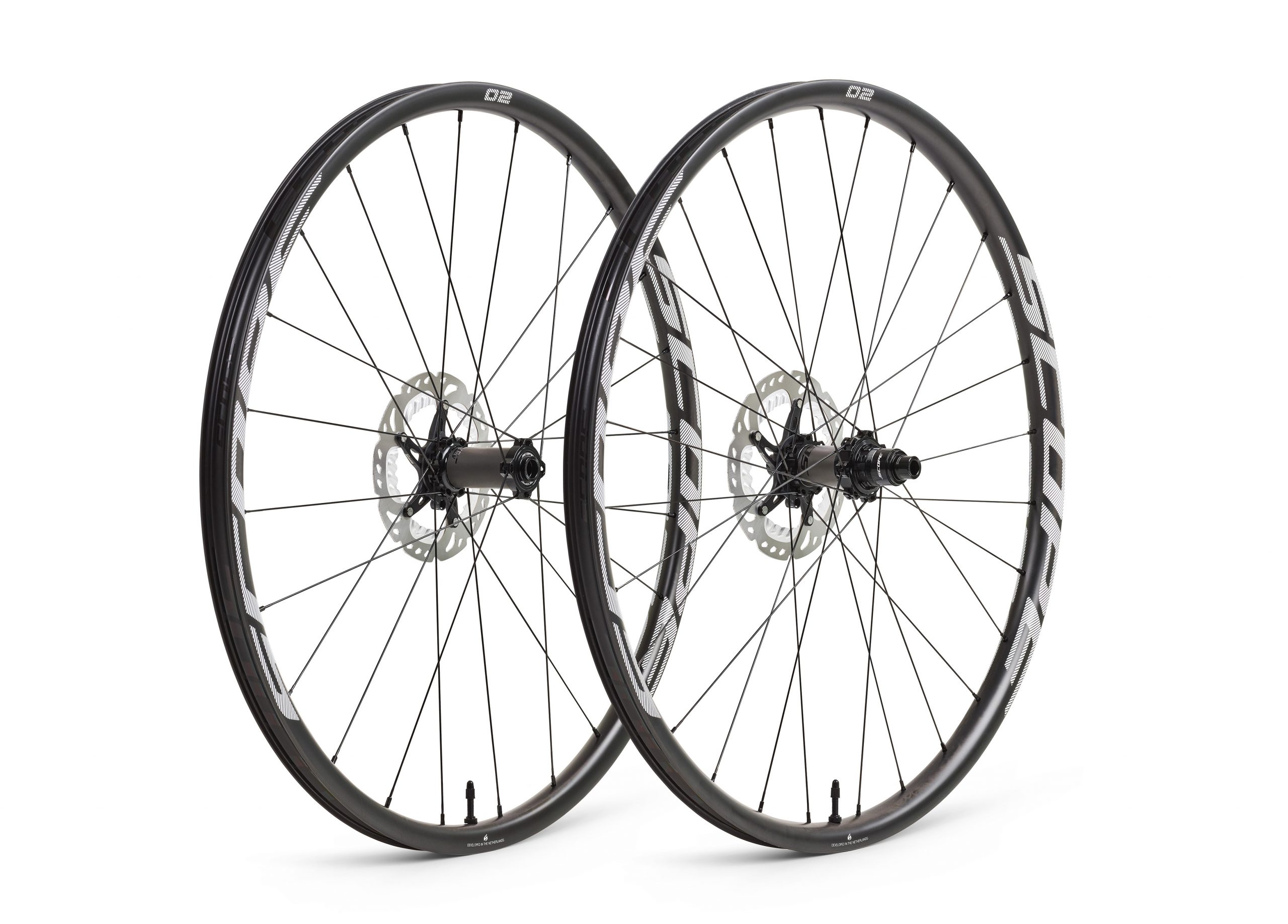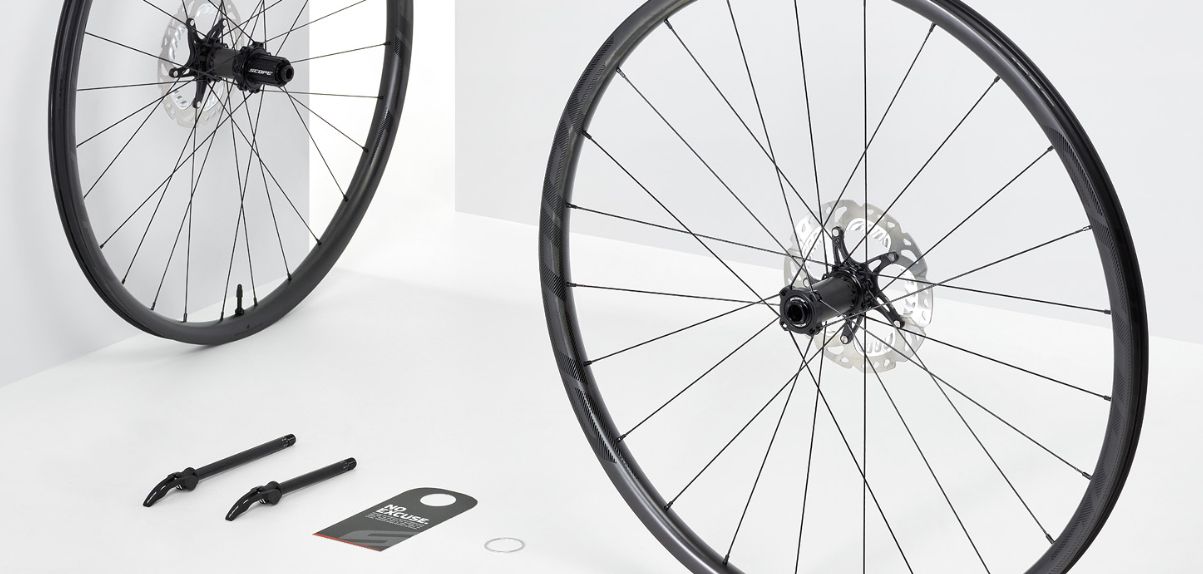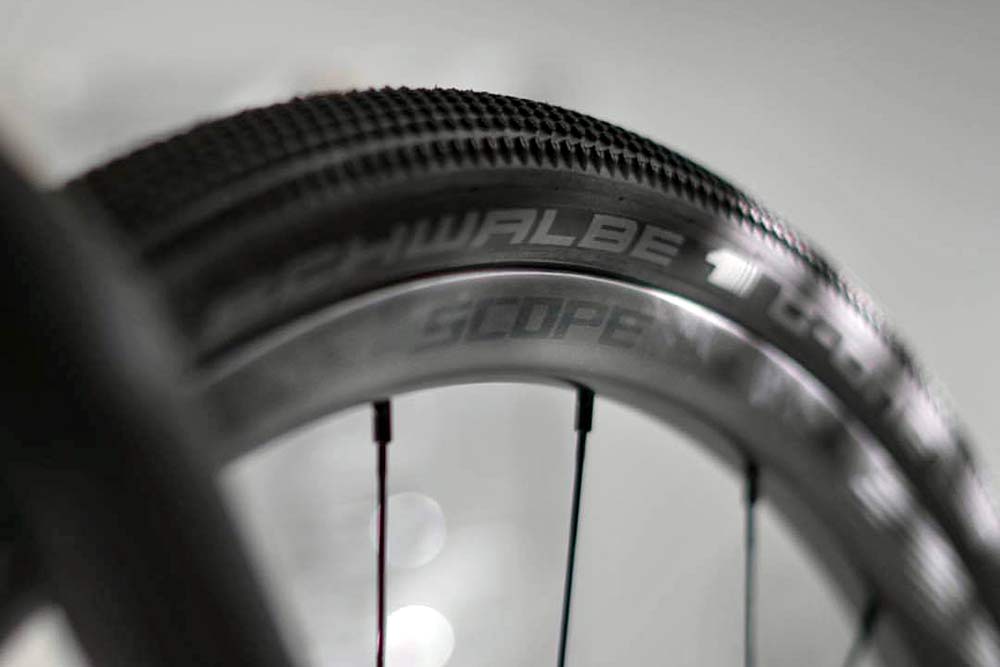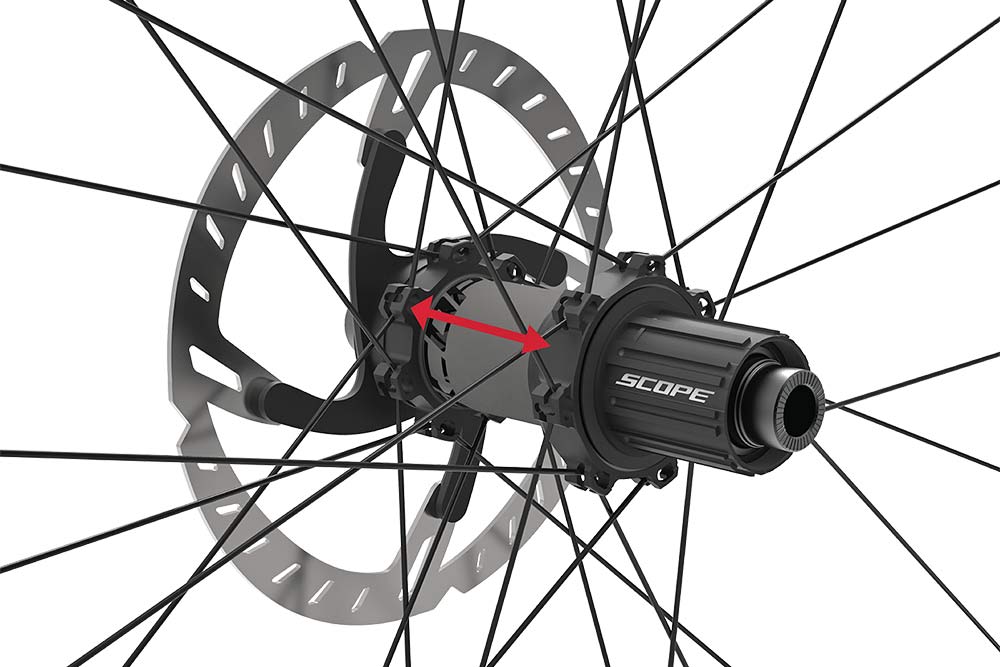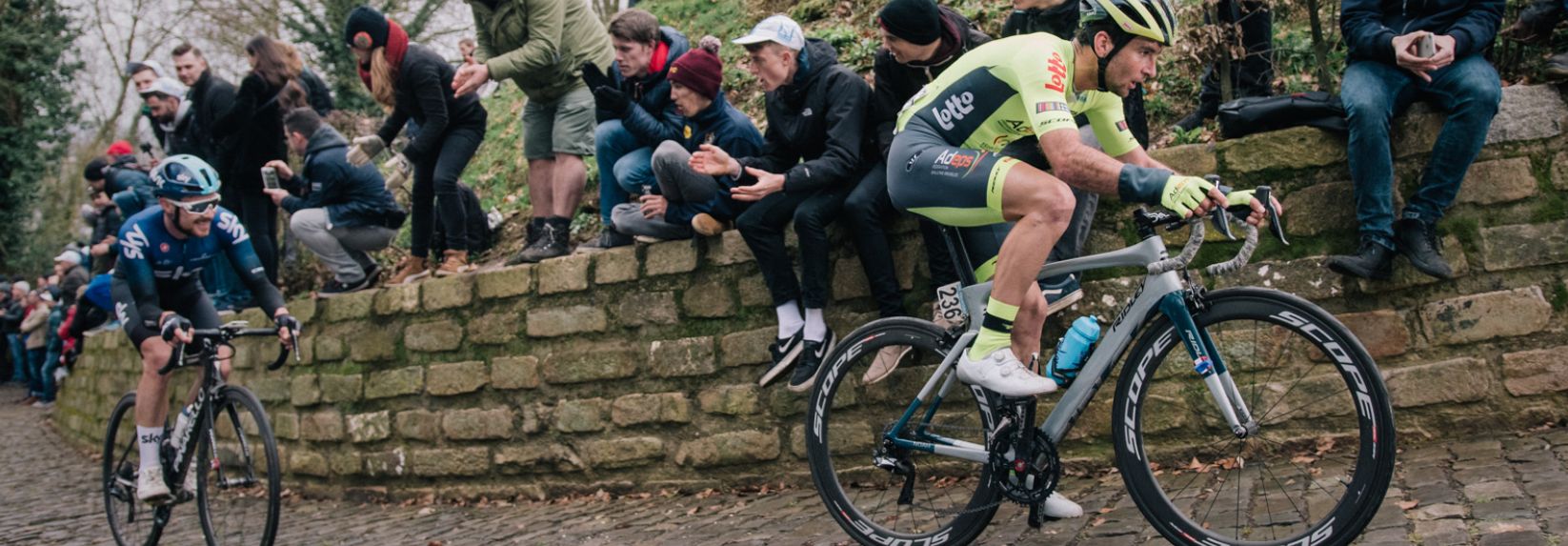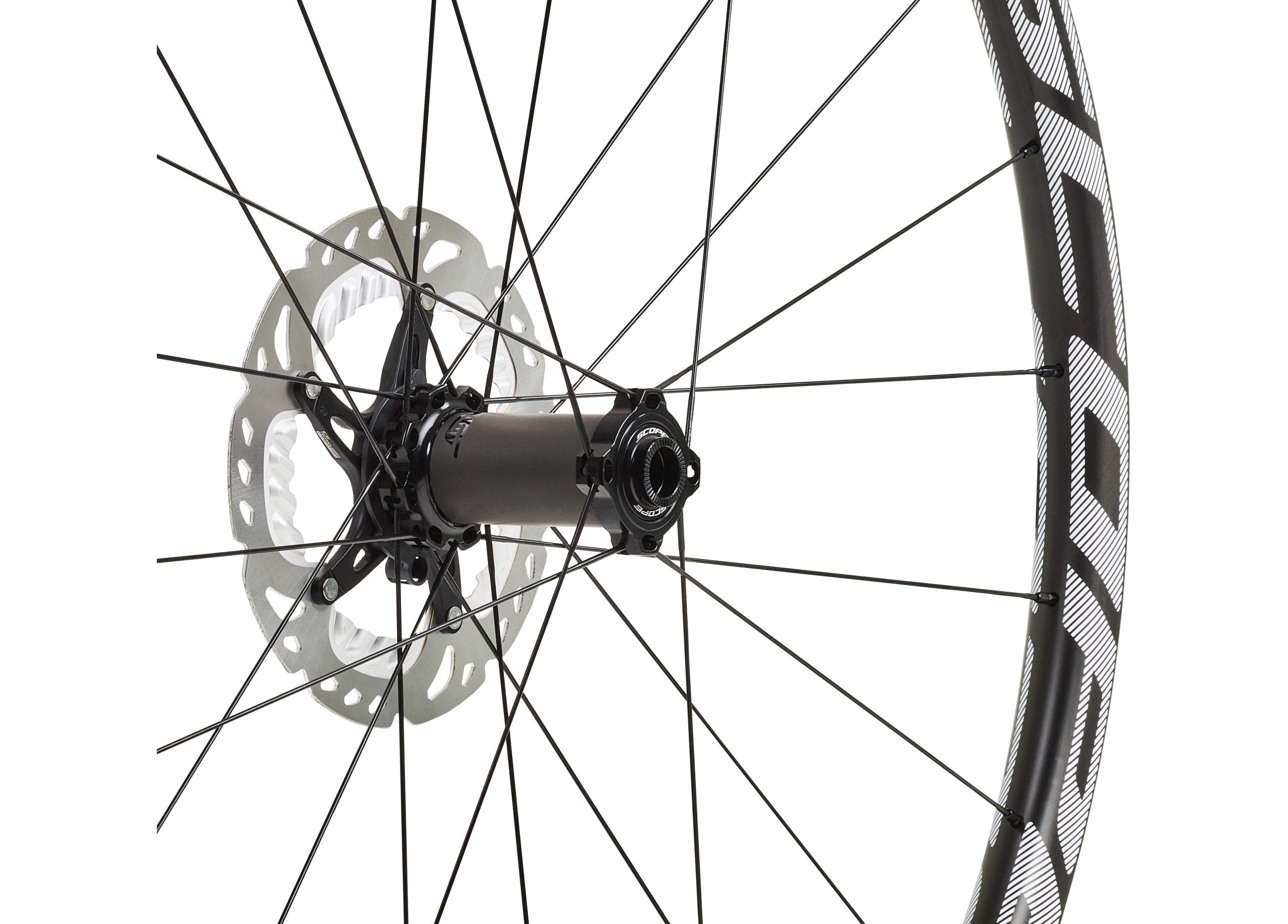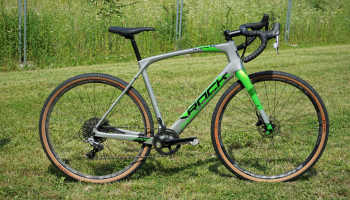Nowadays, a new “me-too” wheel producer seem to pop up week by week on the international market place. While I wouldn’t call ScopeCycling a brand new venture, the founding year of 2013 doesn’t indicate an overly long track record, hence we shouldn’t expect an extended expertise.
On the other hand, I had the pleasure to talk shop with Rik Kusters, the co-founder of Scope at the Eurobike where I learned a lot about their take on wheel building, attitude and manner they go about their business. After the discussion went deeper, I realized that there is much more behind the brand than one would presume…
The company’s experience in professional cycling includes over 350 races, which contributes to the appreciation what such an undertaking entails. Rik Kusters’ enthusiasm and passion for what they do was omnipresent. Mind you, being business savvy and having technical expertise are two completely different attributes. It is all the more important since, according to their statement, they develop carbon wheel technologies on their own and always aim the “best in the class” status. It is not a cocky statement, especially considering the market attitudes in the high-performance carbon wheels category. Hence a certain skepticism seems justified.
Scope’s slogan “NO EXCUSE” relates to their cycling careers back in the days. This rider mentality is being translated seamlessly into their business: winners have a plan, losers have an excuse. Therefore Scope Cycling states: No Excuse!
It’s also worth mentioning that all Scope’s research and development is managed internally as well as at the Research & Development center in Eindhoven, The Netherlands. Therefore an access to a deep well of technologies and know-how accumulated at the surrounding universities is a great bonus for the company. Scope collaborates and partners with those institute intensely.
Although Scope Cycling achieved a level of quality, they keep innovating passionately in order to push the boundaries and to keep their status to be the best in class. While talking with them one gets the notion that there is a massive amount of ubiquitous ingrained curiosity and passion that keeps the motivation high to improve even more.
According to their statement, Scope approaches the wheel as a system instead of blending separately designed components together. Hence, every component is developed by Scope in order to create an impeccable set-up for the final product. Scope wheels cover all cycling discipline, both on and off road.
In this detailed review I’ll test a model from Scope’s off road category. The new racing O2 off-road wheelset caters for a devout MTB/CX audience, be it a gravel, CX, or XCO racer. The 25mm internal width and hookless bead rim established himself in the middle ground, as Scope calls it an unparalleled wheel option for both gravel bike and cross-country mountain bike racing.
The proficiency they gained with the first iteration of road-wheels had been shared with this new O2 wheelset up to an extent. The major targeted attributes Scope wanted address were a proper balance of weight, lateral stiffness, certain comfort and long term durability. Interestingly, Scope joined forces with tire producer Schwalbe by develop the new O2. The bottom line was a 31mm external, 25mm internal rim profile with a hookless tubeless bead.
The tubeless rim depth hit a sweet spot of 23mm. In case you construct the rim wall higher comfort aspect diminishes, let alone the increases weight associated with deeper wheels. Speaking of which, 1380g for a racing wheel-set is respectable considering the long term durability fact. More on that later… The rationale behind this cooperation was to gain an AAA certification from Schwalbe. The German tire manufacturer rates all wheel producers concerning the best sealing interface between rim and tubeless tire.
With Local Reinforcement Technology (LRT), Scope tries to further boost the durability. The spoke bed is impressively thin. Material is added only around the molded-in spoke holes to withstand spoke tension. That enables Scope a 10% weight drop while strength and durability was supposed to be kept the same level.
The Centerlock hubs are a developed in house with wider hub flanges for spoke bracing angles adjusted to their offset rims. The optimally sealed SKF bearings contribute to the resilience too. Bearing-wise an optional CeramicSpeed upgrade is available. Common industry-standard compatibility is provided, hence Thru-axle endcaps, Shimano or SRAM XD bodies and boost or non-boost hubs.
One of the appealing point of this wheelsets is its versatility to use it in all off road segments. We meant to apply it in Cyclocross, Gravel racing, XCO and marathon/stage racing. The test was kicked off in middle of cross season, so we hurried up to set them up tubeless and start racing with them on the weekly basis. Despite the relentless weather later in the season I had zero concerns as for the durability in cross races, based on the assumption if they are durable enough for XCO, they may hold up well everywhere else too. It was just the frequency of races and minimal maintenance that started to cause me headaches.
The wheels were to be transformed into the imminent XC season right after the cross season. The wheels earned tons of accolades for their snappy acceleration, stability and wide range of adaptability in terms of tire width. The UCI-mandated 33mm width was never an issue, nor was the dedicated mud-tire width of 30mm. And for good measure we tested them with 25mm and 28mm road tires too just learn how they behave under pure road conditions. I cannot speak for the tube version, but running them tubeless gave us a confident feeling of no-burping. Running them as low as 20psi on 25mm road tires is not advisable, though due to the banishing stability in fast corners, mostly downhill.
Much to my regret and lack of time, the wheels got jet-washed most of the time. So a lurking noises and bearing issues were to be expected. Well, even after time period of 3 month, we didn’t detect any suspicious noises. But a proper hub maintenance was overdue. I cannot speak for the optional CeramicSpeed bearings durability but the built in SKF with proper sealing did very well indeed.
Should the O2 wheels to be built deeper than 23mm for sandy cyclo-cross sections? I am not an advocate of deep wheels for cross races, as a moderately kept height that keeps the weight at bay and provides fairly high stiffness is more appropriate in my opinion. In case these wheels are used as road wheels, [for training purposes, for example] a deeper rim would make more sense.
After a brief XCO intro in Italy where we had the perfect opportunity to set it up tubeless and re-adapt it to MTB applications, we were good to go and kick off the next test installment: MTB stage races. No other discipline, in my experience, gives you this wide variety of aspects and factors to learn all attributes of the wheels. As usual the wheels were built in in a Trek Top Fuel. Thankfully to set them up tubeless was an easy task. Which cannot be said about non-tubeless tires. Here, without compressor and repeated process there was no way to keep them sealed.
The manner the Scope O2 accelerated and kept its nimble character has been carried over from what we experienced first on cyclo-cross tracks. Its true character shone more on rather unforgiving rocky downhill tracks were sudden turns and abrupt direction changes were a daily fair. Tire grip was just one of those needed ingredients that was necessary in these conditions. All the more so in case of Michelin JET XCR we raced on. Yes, this calls for highest attention to be paid and be alert all race long, since these tires, while insanely fast, are famously intolerant of rider failures. I remedied that with lowering the tire pressure from my usual 20 psi down to 18psi and then, at places on paths with less amount of rocks down to 17psi. That is truly exceedingly low, my race weight of 58kg and clean riding style notwithstanding. Yet, the rationale behind this experimentation was also to find out Scope O2 ‘pain tolerance’ without denting and subsequently damaging the rim completely. So far so good, however, and only at 16 Psi I got remembered to stop pushing the boundaries any further.
For the sake of experimentation I swapped the JET CCR for Schwalbes Rocket Ron. But this didn’t prevent it from hitting the rim considerably. There were 2 stages the rim got approx. 10 mediocre and couple of rather hard hits. I was pretty sure, these hits killed the rim for good. I had heavy conscious being so hazardous, and maltreating them this much. Nonetheless, I frantically wanted to know how far I can push them. Pretty far, let me put it this way, as the Scope O2 took the beating literally. The only caveat was an intermittent burping which I chalk up to the extremely low tire pressure. I didn’t have the pleasure until now to test any wheels with such narrow rim width [25mm] that would able to prevent a burping at such low tire pressure.
Thanks to centerlock disc mount as standard it was a no brainer to swap discs which I did 2 times for malfunctioning disc brakes. It was almost a forgone conclusion that the wheels will do well given my weight and riding style. But how would they perform under different conditions. Case in point my team mate sports 80 plus Kg. That said, he attested similar characteristics in regard to acceleration, nimbleness and keeping the momentum. The tire pressure had to be adjusted though, especially for higher rider weight but most of all due to his more aggressive riding style [down-hill background.] I predicted a damaged, dented rim all over the place. Happily the wheels survived this trial too. Granted, he treated them more gently than usually but still, the wheels proved once more that despite its low-ish weight of 1380gramm they are not limited to the most weight conscious riders only.
The next experiment came about by chance as I have got to make an entourage for a team member who happens to race enduro. As a result of his crash during stage 2, and demolishing his heavy-duty wheels in the process, there was merely one remedy how to save his racing weekend. Yes, I gave him the Scope O2 with heavy heart. Undeniably, I was hugely intrigued by how this light weight wheels would fare although we knew we played Russian roulette. Thankfully the remaining stages were rather gentle, meaning loaded with pedaling liaison parts and the downhill parts weren’t as taxing. But still, it was a proper enduro race, and playing around whit wheels designed for XCO-duties is just not suitable.
Long story short, yes both the rider as well as the wheels ended up unscathed. He was beaming all over his face since the lion part of the stages were mastered easily given the low weight. He made up time [which he lost on descents] on uphill sections considerably. Unfortunately we can nor quantify the bottom line net gain, or loss for that matter. But based on his statement the unprecedented agility and associated acceleration saved him massive amount of energy. Would he keep the wheels for the next endure round coming up? Net necessarily. As he acknowledges, he would have to treat them gently on merciless downhills. Subconsciously he was certainly limited. But again, we are talking about extreme scenarios. The wheels weren’t slated to be subjected to a test like this. At the end of the day it makes me pay kudos to the Scope team for designing the wheels the way they did.
Now, the long-winded test carries on. In addition to the gained first experienced above, more stage races and 24 hour solos will follow. As for the time being the wheels are subjected to gravel races. They already went through a monster-cross event. They aren’t more demanding than a usual XCO race. Sure the rigid fork stresses the wheels more, however the rest of the conditions are comparable to XCO. Based on my experience thus far, they deal fairly well with monster-cross tires up 2.1 inch width. I will test them with slightly wider tires as soon as I am lucky to find an adequate test mule sporting a proper tire clearance. But from now on I pay high attention to maintenance since my curiosity is ballooning vastly in regard to its toughness, durability and resilience. If they fail eventually, down the road, it shouldn’t be caused by carelessness.
It remains to be seen whether all the boxes in my test agenda are going to be ticked. Granted, it is an unusual test, by which I try to prove the versatility and robustness of the wheels. I was already asked to provide them for the 3rd EWS round coming up soon. Since its quickly earned good reputation is inflating, it becomes hard to give them a rest. Thus far no truing was needed, but if we keep them testing even between races [for training purposes], it is just a matter of time of a complete overhaul. Unless the Scope O2 prove me wrong. The test remains a suspenseful story. Please tune in for the following installment
What the manufacturer says:
The Scope O2 is a purpose-built XC and gravel wheelset without any limitations. It weighs only 1.380 grams and combines lateral stiffness with comfort and durability. The rim is optimized for the use of tubeless tires. The rear hub features an extra wide flange distance and a 2:1 spoke pattern in order to achieve an equal spoke tension. As a result, the O2 will help you to accelerate your ambitions on any terrain.
- Lightweight
- Extreme durability
- Improved stiffness
- Improved compliance
DEVELOPED TO PERFORM
All Scope wheelsets are developed as a system. The hubs feature a characteristic wide flange distance and as such allow for an equal spoke tension. Combined with our off-road specific wide full-carbon rim the O2 offers a very high lateral stiffness to minimize power loss and guarantee predictability and efficiency. To build the rims for the O2 we make use of the Local Reinforcement Technology, a unique production technology which was developed in-house. Instead of reinforcing the entire spoke hole section, we locally strengthen the rim at the spoke hole itself. By doing so, we are able to reduce the overall weight of the wheelset by 10 %. The tire bed of the O2 was developed in collaboration with Schwalbe and is optimized for tubeless tires. It offers an internal rim width of 25 mm. Being hookless, it allows for perfect mounting, inflation, and on-pressure properties. The hubs are compatible with a wide variety of axle configurations. You can adapt your Scope wheels to nearly any frame of your choice by switching the end caps.
SPECIFICATIONS
Rim height: 23 mm
External rim width: 31 mm
Internal rim width: 25 mm
Weight Boost: 618 grams/762 grams
Weight Non-Boost: 609 grams/751 grams
Hubs: Scope
Spoke count: 24/28
Axle system Boost: TA 110 x 15 mm, TA 148 x 12 mm
Axle system Non-Boost: TA 100 x 15 mm, TA 142 x 12 mm
More information: https://www.scopecycling.com/product/o2/?radius=495

